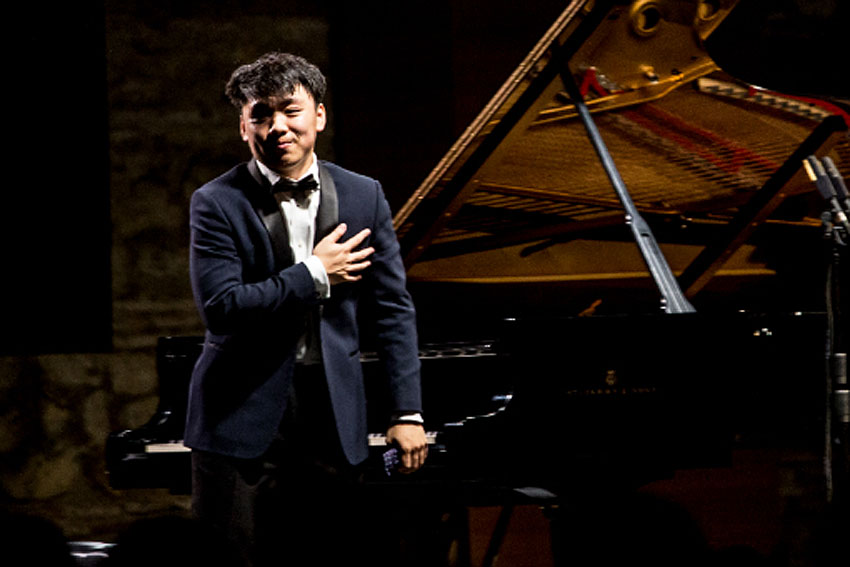The Tsinandali Festival has class. With its plush wood-panelled Chamber Music Hall, manicured grounds and star-studded casts, everything, from the music to the setting, has clearly been prepared with the utmost care and taste. Gianandrea Noseda inaugurated the event with what had apparently been a thrillingly hard-fought climactic arrival to the summit of Mahler’s “Resurrection” Symphony. Now, bringing us back down to earth, pianist George Li gave a display of sheer sophistication that was fully in tune with its plush surroundings.
It must have been an honour to inaugurate the hall, given the illustrious roster of pianists it will host over the coming days. There is musical royalty in the form of András Schiff, and what promises to be pianistic firepower from Yuja Wang. The Chinese American Li, once another purveyor of typically scorching performances, is better known these days for his sensitivity and nuance. On the basis of this performance, the 24-year-old is no mere technical whizz but a player with depth and personality.
There was plenty of material for him to work with in Haydn’s Piano Sonata in E flat major, considering the work’s symphonic expressive range.The Allegro was daubed in rich, transmogrifying colours, from diamantine brilliance to ruby reds, and the Adagio a picture of utter calm. Li brought cartoon-like dramatisation to the cat-and-mouse finale, the pianist bouncing on his stool with zany abandon, his mouth cocked and eyes wincing, as he hammered the woodpecker notes and applied brilliant streaks of colour.
After that, he slowed things right down with a spatial account of the Adagio sostenuto of Beethoven’s “Moonlight” Sonata. The space between the slowly-rotating right-hand arpeggios and ponderous left-hand bass was seemingly immense, the piece stretched out in all directions, leaving us peering into a dark and limitless expanse. The hopping syncopated motif was smoothed out in the cheery Allegretto, the merry swinging theme that follows evoking a rustic underwater tavern alive with the slow-motion clinking of beer glasses. Then Li let rip an impetuous storm of notes in the Presto agitato, the lyrical theme stealing in to stem the flow every so often, to show us just what a formidably technical and expressive player he is.
Chopin’s Mazurkas (Op.24) were unfurled with simple expressivity, Li incorporating gently twisting modes, spidery webs and cascades of sparkling detail with dynamic playing that ebbed and flowed. The biggest challenge was saved until last with Liszt’s Réminiscences de Don Juan – a piece Busoni called “an almost symbolic significance as the highest point of pianism.” Li gave a forbidding depiction of Mozart’s Commendatore, the pianist generating a sound of great density that was striking in the context of the filigree playing that had preceded it. Having then scaled back to jazzy tinkering, Li’s rendition of the “Là ci darem la mano” theme was so laid back the brilliance of the variations that followed almost took us by surprise. The final tidal surge had the music straining at the seams; then, when he got to the “Fin ch’han del vino” theme, Li pulled out all the stops with a musical firework display that culminated with a hammering climax. A class act all round.
